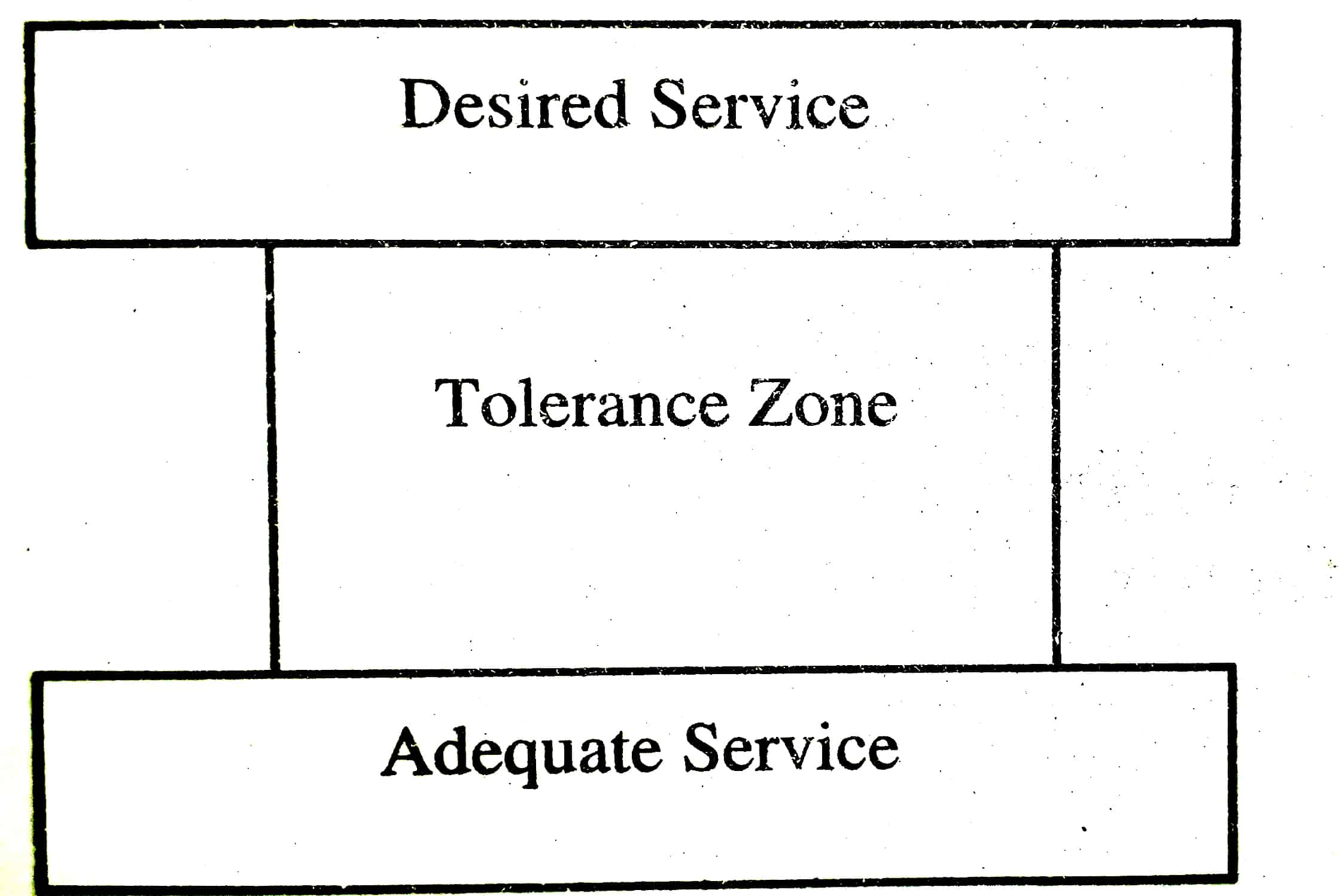Zeithaml gave the concept of the zone of tolerance, which can be defined as a zone between the desired and the adequate level of service. This is shown in the figure given below.
This tends to rationalize service quality in terms of the expected quality and the quality that is actually received by the consumer. The actual service delivery can be within the zone of tolerance or above/below it.
This can be explained as follows:
1. Customer Delight: It occurs when the service performance exceeds the expectations of the customer. It is very difficult to put into practice, and that is why consumers are often surprised and hence delighted when it occurs.
2. Customer Satisfaction: It happens when the service delivery is within the zone of tolerance as defined by the consumer.
Satisfaction levels can also depend on where the actual level is within the zone (high or low).
3. Customer Dissatisfaction: It happens when the actual performance falls below the level of adequate service as expected by the consumer.
Again the intensity of the consumer’s reaction can range from being dissatisfied to extremely angry depending on how vast the difference is.
Width of Tolerance Zone
The level of variability that is acceptable to the consumer is defined as the width of the tolerance zone. This variability can be in the form of product performance, promotion campaigns, the performance of sales teams, etc.
Height of Tolerance Zone
When the zone is narrow, then there is a very fine line between what the customers want and the expectations that they have. In other words, this means that the marketer will have a hard time because it is very challenging to satisfy such customers.
On the other hand, when the zone is wide, then it becomes easier for service firms to satisfy consumers. It is always difficult to delight customers.
On the other hand, the situation where consumers are dissatisfied is a situation that companies try to avoid at all costs.
Customers also tend to have different expectations and different zones of tolerance for various factors of the service.
For example, customers of a restaurant may have average expectations for ambience, low expectations for staff but very high expectations for the food quality.
Marketers have to keep two aspects in mind:
1. The marketer needs to consider those aspects which are considered important by the consumer. Consumers may have expectations on a variety of factors, but there are a few which are most critical for them.
Firms often look at product strategy, but there can be many other factors that severely impact the marketing program of the company.
2. The marketer also needs to have a mechanism for measuring consumer expectations and product performance over time.
Synchronization of product performance and expectations of the consumer with the zones of tolerance acts as a very important tool by which customer satisfaction for the product or service can be increased over time.
This tool also helps the company track its performance and customer satisfaction with new products/services. It also helps the company to take necessary remedial actions if customer satisfaction is found to be deteriorating.
